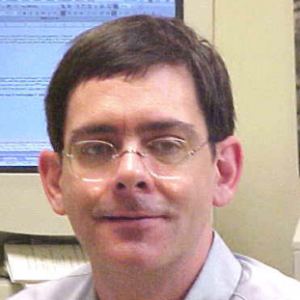Dr. David Mullin
Associate Professor

Areas of Expertise
Biography
Research in the Mullin lab is divided between two main projects.
Development of advanced liquid biofuels. This project uses bacterial fermentation reactions to produce a variety of solvents including butanol, an advanced liquid biofuel for internal combustion engines. We have isolated a collection of several dozen novel solventogenic bacterial strains, including some that produce butanol using agricultural waste products as the feedstock. We are investigating the physiological conditions that maximize butanol yields and we continue to enlarge our strain collection with the hope of finding organisms with novel biochemical potential relative to liquid fuel production.
Antimicrobial drug development. This project focuses on a new chemical class of antimicrobial agents that we discovered called the TU-195s. One of these, 4-TU-1956, is effective in vitro against all gram positive bacterial pathogens tested including methicillin resistant Staphylococcus aureus strains (MRSA), vancomycin resistant enterococci (VRE), and Bacillus anthracis. We are in the process of identifying the cellular target of 4-TU-1956, and we preparing to begin testing the therapeutic potential of 4-DDP1956 in mice. We are also preparing to synthesize chemical derivatives of 4-TU-1956 that have higher antimicrobial activity and lower toxicity.
Dr Mullin normally teaches courses in Molecular Biology and Microbiology, and has provided course outlines for your convenience.
Articles
A Single Active-Site Mutation of P450BM-3 Dramatically Enhances Substrate Binding and Rate of Product Formation
2011
Identifying key structural features of cytochromes P450 is critical in understanding the catalytic mechanism of these important drug-metabolizing enzymes. Cytochrome P450BM-3 (BM-3), a structural and mechanistic P450 model, catalyzes the regio- and stereoselective hydroxylation of fatty acids. Recent work has demonstrated the importance of water in the mechanism of BM-3, and site-specific mutagenesis has helped to elucidate mechanisms of substrate recognition, binding, and product formation.
Organization, expression, and function of Caulobacter crescentus genes needed for assembly and function of the flagellar hook
2001
This paper reports on the organization, expression, and function of the divergently transcribed flbG and flaN operons in the hook gene cluster of Caulobacter crescentus. The transcription initiation site of flbG was determined previously, and in this work the transcription map was completed by locating the 3' end of the mRNA using nuclease S1 protection assays.
Inhaled benzene increases the frequency and length of lacI deletion mutations in lung tissues of mice
1998
This study investigated the frequency and pattern of mutations that arose in lacI transgenes in lung tissues of mice exposed to 300 p.p.m. of benzene for 6 h/day x 5 days/week for 12 weeks. The nucleotide sequence changes in 86 lacI- transgenes from lung tissues of eight benzene-exposed mice (BEM) and 78 spontaneous lacI- transgenes from lung tissues of eight unexposed control mice (UCM) were identified and compared.
